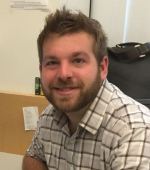Postdoctoral fellowships will advance understanding and treatment of injurious behavior, sensory issues, microbiome changes and more
Postdoctoral fellowships will advance understanding and treatment of injurious behavior, sensory issues, microbiome changes and more
July 13, 2015
![]()
Autism Speaks is pleased to announce its 2015 class of Meixner Postdoctoral Fellows in Translational Research. The fellowship program invests in rising talent in autism research and is made possible by a generous gift by the estate of the late Charles Meixner.
"Our dedication to translating research into real-world treatments and supports may be best epitomized by our continuing investment in this new generation of autism researchers,” says Autism Speaks Chief Science Officer Rob Ring. “These are the remarkable scientists whose careers will convert breakthroughs in science and technology into interventions that can transform lives.”
The Meixner Postdoctoral Fellowships in Translational Research support exceptional scientists beginning their careers in autism research as they pursue projects that include both laboratory research and clinical studies directly involving participants affected by autism.
Each fellow works under the guidance of two or more mentors who rank among the field's leaders in basic or clinical research. Each fellowship spans two years.
The estate of Charles Meixner established the program with a generous gift to Autism Speaks in 2013. Charles and his wife, Maria Teresa, were profoundly affected by autism when their five-year-old daughter Caroline was diagnosed with what was then termed infantile schizophrenia.
“Little was known about the disorder at that time and even less was available with respect to intervention and treatment,” said Meixner family spokesperson Hector de Marchena. “For this reason, our Uncle Charles made clear his desire to bequeath this gift to Autism Speaks.”
This year’s class of fellows and their projects are:
![]() Alan Lewis, a psychiatrist pursuing research at Yale University, will study the safety, effectiveness and biological action of transdermal nicotine as a potential treatment for destructive and disruptive behavior in people who have autism.
Alan Lewis, a psychiatrist pursuing research at Yale University, will study the safety, effectiveness and biological action of transdermal nicotine as a potential treatment for destructive and disruptive behavior in people who have autism.
Challenging behaviors are not a core symptom of autism. But many children and adults affected by autism struggle with behaviors that pose a danger to themselves and others. When behavioral intervention fails, medication options are extremely limited and often cause unwanted side effects.
Research has suggested that, in some individuals with autism, aggressive behavior may result from problems affecting the brain’s nicotinic acetylcholine receptors. The chemical nicotine engages these receptors. In addition, studies with animals suggest that administering nicotine reduces aggression.
Dr. Lewis will test the potential benefits of nicotine therapy to reduce harmful behavior in two ways:
He will conduct a pilot clinical trial to assess the safety and effectiveness of transdermal (skin patch) nicotine in reducing disruptive and destructive behavior in participants who have autism.
He will study the biological action of nicotine in the brains of laboratory mice bred to display aggression and autism-like behaviors.
Dr. Lewis’s mentors at Yale include neuroscientist Marina Picciotto and child psychologist Denis Sukhodolsky.
![]() Alexandros Kanellopoulos, at Belgium’s Vlaams Instituut voor Biotechnologie, will advance understanding of how mutations in the CYFIP1 gene produce autism-related communication problems. People with deletions or duplications of the CYFIP1 gene at are high risk for developing autism, epilepsy and/or schizophrenia. The gene regulates the production of proteins that play a crucial role in the function of the brain’s nerve cells (neurons).
Alexandros Kanellopoulos, at Belgium’s Vlaams Instituut voor Biotechnologie, will advance understanding of how mutations in the CYFIP1 gene produce autism-related communication problems. People with deletions or duplications of the CYFIP1 gene at are high risk for developing autism, epilepsy and/or schizophrenia. The gene regulates the production of proteins that play a crucial role in the function of the brain’s nerve cells (neurons).
In his clinical study, Dr. Kanellopoulos will enroll participants who have autism and mutations or duplications in the CYIP1 gene. He will assess their communication abilities and behaviors and those of their family members. This will help distinguish symptoms associated with the CYFIP1 mutation from behaviors stemming from other influences. In doing so, he hopes to increase understanding of the communication and behavioral difficulties associated with this mutation and guide the development of future treatments.
He will also study the neurons and behavioral abnormalities of fruit flies that have a genetic condition that reduces cell levels of the protein produced by CYFIP1. As part of this animal research, he will perform preliminary research on the effectiveness of potential treatments.
Dr. Kanellopoulos’s mentors at Vlaams institut voor Biotechnologie include neuroscientist Claudia Bagni and psychiatrist Jean Steyaert.
![]() Sarah Baum, of Vanderbilt University, will explore possible causes of sensory-processing difficulties in people with autism. She will also investigate how these sensory difficulties contribute to communication challenges. Her goal is to advance the development of more effective treatment strategies for autism and sensory-processing disorders, which often go hand and hand.
Sarah Baum, of Vanderbilt University, will explore possible causes of sensory-processing difficulties in people with autism. She will also investigate how these sensory difficulties contribute to communication challenges. Her goal is to advance the development of more effective treatment strategies for autism and sensory-processing disorders, which often go hand and hand.
In particular, Dr. Baum will explore the possibility that autism-related sensory challenges result from a highly variable, or inconsistent, brain response to incoming sensory information (sights, sounds, touch, etc.). This inconsistency may make it difficult for the brain to respond appropriately to sensory cues.
In her clinical study, Dr. Baum will study brain and physiological responses to sensory input in children affected by autism. She will use this information to design a training program aimed at improving sensory processing and communication skills in these children.
Dr. Baum will work in the Multisensory Research Lab of Mark Wallace (director of the Vanderbilt Brain Institute), with the additional guidance of speech-language pathologist and autism specialist Stephen Camarata.
![]() Gil Sharon, of the California Institute of Technology, will explore autism-related changes in the microbiome – the community of digestive bacteria that colonize the intestinal tract – with the aim of understanding how they contribute to behavioral and gastrointestinal (GI) difficulties in people with autism.
Gil Sharon, of the California Institute of Technology, will explore autism-related changes in the microbiome – the community of digestive bacteria that colonize the intestinal tract – with the aim of understanding how they contribute to behavioral and gastrointestinal (GI) difficulties in people with autism.
Recent research has shown that many people affected by autism have abnormal levels of certain digestive bacteria. It is not yet known what causes these differences. However, the changes have been associated with both GI distress and body-wide inflammation.
In his study, Dr. Sharon will colonize the intestines of germ-free mice with transplants of intestinal bacteria from people who have autism. Germ-free mice are raised in a sterile environment to prevent them from developing their own microbiome. For comparison, he will also colonize mice with intestinal bacteria from people not affected by autism. He will then study the biological and behavioral differences in these two groups of mice.
Dr. Sharon’s research promises to advance understanding of how changes in the microbiome may contribute to autism’s core symptoms as well as to the GI distress that is common among people who have autism. In the process, he hopes to produce an important new line of animal models for studying autism and its potential treatments.
Dr. Sharon will work in the Caltech laboratory of microbiologist-immunologist Sarkis Mazmanian, with additional guidance by neurogeneticist Pat Levitt, at the Children’s Hospital of Los Angeles.
“Because autism is enormously complex and wide-ranging in its challenges, we welcome the broad scope of interests – from sensory and GI issues to molecular pathways in the brain – seen in these fellows and their projects,” says Paul Wang, Autism Speaks vice president and head of medical research. “By combining their fresh energy and new perspectives with the expertise and resources of their mentors, we expect to see their contributions to the well-being of people with autism continue for many years to come.”
Study abstracts for all four research projects can be found using the Autism Speaks Grant Search here.
Subscribe to a daily feed of Autism Speaks Science News here.
![]()



 “The entire field of medicine is moving towards this notion of individualized medicine and understanding certain gender differences … how they influence diagnosis and treatment can only move us towards this goal of really treating each individual based on their symptoms and biology.” – Christine Wu Nordahl, University of California, Davis
“The entire field of medicine is moving towards this notion of individualized medicine and understanding certain gender differences … how they influence diagnosis and treatment can only move us towards this goal of really treating each individual based on their symptoms and biology.” – Christine Wu Nordahl, University of California, Davis Valerie Hu on a key biochemical difference in the brains of males versus females with autism
Valerie Hu on a key biochemical difference in the brains of males versus females with autism “Understanding sexual dimorphism in the brain and how genetic risk factors could potentially confer autism risk in a sex-specific manner is vital in treating autism in its entirety and ensuring that specific subsets aren’t set at a disadvantage.” – Jake Gockley, Yale University School of Medicine
“Understanding sexual dimorphism in the brain and how genetic risk factors could potentially confer autism risk in a sex-specific manner is vital in treating autism in its entirety and ensuring that specific subsets aren’t set at a disadvantage.” – Jake Gockley, Yale University School of Medicine Donna Werling on differences in autism risk associated with having a sister versus brother with autism
Donna Werling on differences in autism risk associated with having a sister versus brother with autism 


 * Learn more about the Autism Speaks Autism Treatment Network
* Learn more about the Autism Speaks Autism Treatment Network 








 The CDC continues to recruit SEED study participants, ages 2 to 5, and their families at sites across the United States. (See map below.) Its research goals include greater understanding of the behavioral and health challenges that often affect children with autism. The study is also designed to foster inclusion of children from groups such as minority communities that have been under-represented in autism research.
The CDC continues to recruit SEED study participants, ages 2 to 5, and their families at sites across the United States. (See map below.) Its research goals include greater understanding of the behavioral and health challenges that often affect children with autism. The study is also designed to foster inclusion of children from groups such as minority communities that have been under-represented in autism research.






 The two related reports appear online ahead of print in the journals
The two related reports appear online ahead of print in the journals 






























 Alan Lewis
Alan Lewis Alexandros Kanellopoulos
Alexandros Kanellopoulos Sarah Baum
Sarah Baum Gil Sharon
Gil Sharon









 The scientific review article –
The scientific review article – 

